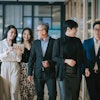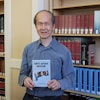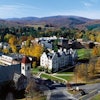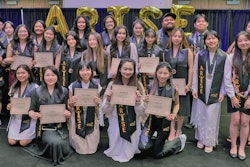Her father never tired of telling the stories about how American GIs in Korea shared their rations with him when he was a shoeshine boy, recalls Dr. Grace J. Yoo, a professor of Asian-American studies at San Francisco State University. He would recount how they gave him chocolate bars and cans of corned beef that yielded enough soup to feed his family for a week
Those memories fueled his desire to come to the homeland of those kind soldiers and pursue a dream that most immigrants share, a vision of a better life for him and, most importantly, for his children, Yoo said. Arriving in 1963, he got a job as a dishwasher and brought his wife to America two years later. He studied to become a chiropractor and raised three daughters, instilling in them the desire to study and succeed. Yoo fulfilled the dream by earning a Ph.D. in medical sociology from the University of California, San Francisco.
Her father’s story is only one of those that could be told by the 1.7 million Korean-Americans who, according to U.S. census data, live in the United States. Nearly 80 percent of them arrived since 1965, when immigration laws were liberalized, in the third wave of Koreans to arrive on U.S. shores over a century, Yoo said.
For the professor, who has taught a course on Koreans in America at SFSU for 15 years, it is clear that too little of their collective story has been told.
“Although this community has been here for over 100 years, it really wasn’t until the ’80s that you see memoirs, novels, children’s literature or autobiographies really about the Korean-American experience,” she said. “It is a community that hasn’t had a lot of literature done on it.”
That began to change when the children of those who migrated in the post-1965 era came of age, she said, but Yoo had not found a suitable textbook to use in her classes. To address that, she has compiled and edited one, Koreans in America: History, Identity, and Community (Cognella, 2012). She had previously relied on “a hodgepodge of different readings” for her students, but decided the time had come to have a comprehensive text. She estimates that about 10 other universities offer similar courses that could use the book.
“The Korean-American community has really increased dramatically over the past 50 years, and I felt that it was time to have a textbook, and there were enough scholars out there to put one together,” she said.
With a foreword by widely respected journalist K.W. Lee and chapters by a distinguished assembly of scholars, Koreans in America brings together discussions of history, personal essays, demographic information and other research. Each chapter is followed by study questions and extensive citations.
Yoo said the main contribution of her book “is that it is another sort of voice that shows that the Korean-American experience is very diverse and that it is not static.
“The issues are changing, the community is changing, and the generations are changing,” she said. “It isn’t just one thing. It is continually changing and who is Korean-American changes as well. That’s the other reason that I did this textbook: to show that the community is not just one formula. There is a lot of outmarriage, so the community is more multiethnic, multiracial.”
The professor hopes students who use the book will gain a greater understanding of history and develop “an appreciation of those who came before them and for the struggles they have had to face in coming to this country.”
“I think we can all draw a lot of resilience from those stories and those experiences, but I also want them to take away an understanding of differences, the diversity and the strengths in the Korean-American community and maybe a better appreciation of their identities, whatever that identity might be,” Yoo said. “Two-thirds of my students are not Korean-American. My hope is for them to appreciate their own identities and histories by looking at the great American experience.”
In a future edition, Yoo wants to add a chapter on the Korean “war brides” — Korean women who married American soldiers during the Korean War — who came to the United States in the early 1950s. “Because of their arrival in the United States, they petitioned a lot of their family members to arrive, so many Korean-Americans can trace their immigration roots to a war bride,” she said. “They are a significant group of people in the Korean-American community who have impacted the growth of the community.”
She said that many Korean-American elders have not shared their stories with the younger generation, particularly those that would recall wartime trauma.
“I think the silences exist because there is a lot of pain, especially for immigrants in this country,” Yoo said. “They are so focused on the dream, so why bring up the past?”


















